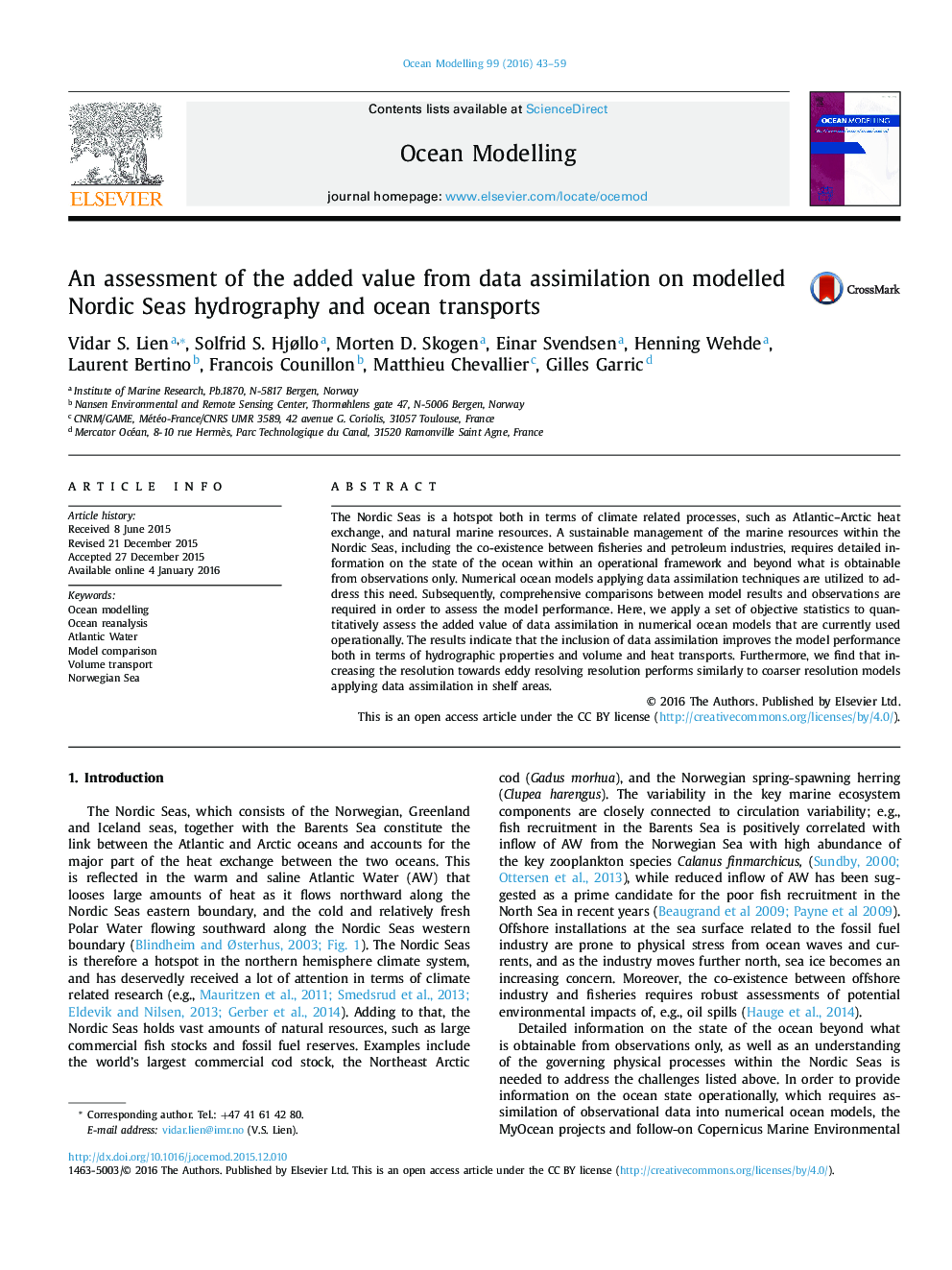| Article ID | Journal | Published Year | Pages | File Type |
|---|---|---|---|---|
| 6388069 | Ocean Modelling | 2016 | 17 Pages |
Abstract
The Nordic Seas is a hotspot both in terms of climate related processes, such as Atlantic-Arctic heat exchange, and natural marine resources. A sustainable management of the marine resources within the Nordic Seas, including the co-existence between fisheries and petroleum industries, requires detailed information on the state of the ocean within an operational framework and beyond what is obtainable from observations only. Numerical ocean models applying data assimilation techniques are utilized to address this need. Subsequently, comprehensive comparisons between model results and observations are required in order to assess the model performance. Here, we apply a set of objective statistics to quantitatively assess the added value of data assimilation in numerical ocean models that are currently used operationally. The results indicate that the inclusion of data assimilation improves the model performance both in terms of hydrographic properties and volume and heat transports. Furthermore, we find that increasing the resolution towards eddy resolving resolution performs similarly to coarser resolution models applying data assimilation in shelf areas.
Related Topics
Physical Sciences and Engineering
Earth and Planetary Sciences
Atmospheric Science
Authors
Vidar S. Lien, Solfrid S. Hjøllo, Morten D. Skogen, Einar Svendsen, Henning Wehde, Laurent Bertino, Francois Counillon, Matthieu Chevallier, Gilles Garric,
